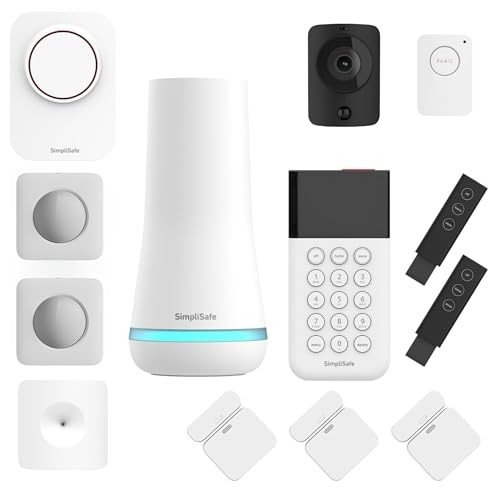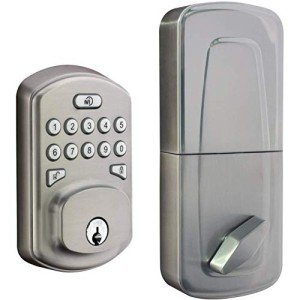
Buy Bathroom Lighting UK
Add a review FollowOverview
-
Founded Date 16 de febrero de 1978
-
Posted Jobs 0
-
Viewed 13
Company Description
The 10 Most Scariest Things About Interior Lighting UK

Interior Lighting in the UK: A Comprehensive Guide
Interior lighting plays a vital role in creating an environment, boosting functionality, and revealing individual design within homes and companies. In the UK, where the weather can be unforeseeable, effective lighting is not only about aesthetic appeals however likewise about making areas feel warm, welcoming, and practical. This post delves into numerous elements of Interior Lighting UK lighting, including types, patterns, tips, and regularly asked questions.
Understanding the Importance of Interior Lighting
Lighting is typically considered the foundation of interior design. It influences mood, functionality, and the perceived size of areas. The right lighting can:
- Enhance the architectural functions of a room.
- Emphasize art work and decoration.
- Enhance safety and security.
- Influence performance in work spaces.
- Develop a comfy atmosphere for relaxation.
Types of Interior Lighting
Efficient lighting style generally integrates 3 primary kinds of lighting: ambient, task, and accent.
1. Ambient Lighting
This is the primary source of light in a room, providing overall lighting. Typical sources consist of:
- Ceiling-mounted fixtures
- Chandeliers
- Recessed lighting
- Soft wall sconces
Ambient lighting produces a structure from which other lighting types can build on.
2. Job Lighting
Task lighting concentrates on specific locations to assist in activities such as reading, cooking, or working. This kind of lighting assists to reduce eye stress and can considerably affect functionality. Typical sources include:

- Desk lamps
- Under-cabinet lights in kitchen areas
- Reading lamps beside beds
- Mounted lights focused on work surfaces
3. Accent Lighting
Accent lighting adds drama and highlights particular objects or areas, such as art work or architectural functions. This kind of lighting can develop visual interest and depth in an area. Sources consist of:
- Picture lights
- Decorative lamps
- Uplighters
- LED strip lights along shelves
Making use of a combination of these lighting types can lead to a healthy and multifunctional space.
Popular Lighting Trends in the UK
The interior lighting landscape in the UK continues to progress, affected by design trends, innovation, and consumer preferences. Here are some popular patterns to watch:
-
Smart Lighting: The arrival of smart technology has changed how people manage lighting in their homes. Smart bulbs and systems like Philips Hue allow users to manage brightness and color temperature level through their smartphones.
-
Minimalist Designs: Sleek, basic designs that blend seamlessly with interiors are dominating the marketplace. Pendant lights with fragile frames, LED strips, and geometric shapes are especially stylish.
-
Industrial Lighting: This trend showcases raw, exposed products. Metal fixtures and Edison bulbs provide a vintage touch that is both stylish and functional.
-
Eco-Friendly Options: With increasing awareness of sustainability, numerous consumers are turning to energy-efficient LED choices and fixtures made from sustainable materials.
Tips for Effective Interior Lighting Design
Creating an efficient lighting plan needs thoughtful consideration of various elements. Here are some suggestions:
-
Consider the Purpose of Each Room: Every area has a different function. Consider what activities will occur and what kind of lighting will support those activities.
-
Layer Lighting: Employ several kinds of lighting within a room to create depth and versatility. Integrate ambient, task, and accent lighting to boost both visual appeals and performance.
-
Use Dimmers: Dimmers allow for control over brightness levels, making it possible for users to adjust lighting according to state of mind and time of day.
-
Integrate Natural Light: Make the most of natural lights like windows. Use light, reflective colors for walls and furnishings to make the most of brightness.
-
Consider Color Temperature: Different color temperature levels (measured in Kelvins) produce various atmospheres. Warmer temperatures (around 2700K-3000K) are relaxing, while cooler temperatures (4000K+) lend a more clinical or energetic feel.
Interior Lighting Mistakes to Avoid
To produce a well-lit area, it’s vital to avoid common lighting pitfalls. Here are some errors to expect:
-
Underestimating Wattage: Insufficient wattage can result in dim, unwelcoming areas.
-
Ignoring Scale: Fixtures that are too small for a room can keep an eye out of place, while oversized fixtures can overwhelm a space.
-
Over-reliance on Ceiling Lights: Relying solely on overhead lighting can create uninviting shadows; balance with additional lighting types.
-
Poor Placement: Misplaced lights can produce locations that are too brilliant or too dark. Plan placements attentively.
FAQ Section
1. What is the distinction in between warm white and cool white light?
Warm white light (2700K to 3000K) creates a relaxing, inviting environment, best for living rooms and bedrooms, while cool white light (4000K to 5000K) is more matched for work areas as it enhances concentration and clarity.
2. How can I take full advantage of natural light in my home?
To take full advantage of natural light, use light-colored walls, tactically place mirrors to show light, and go with sheer window coverings that allow sunshine to travel through.
3. How do I pick the right lighting fixture?
Think about the size of your area, the design of your decor, and the function of the area. Make sure the scale of fixtures complements the room and matches the general aesthetic.
4. Are LED lights much better than traditional bulbs?
Yes, LED lights are more energy-efficient, have a longer lifespan, and can offer a variety of color temperatures, making them a more sustainable lighting option.
5. What should I do if particular areas of my room stay too dark?
Consider including extra task or accent lighting to brighten those locations. Floor lamps, wall sconces, or even tactically put table lamps can help minimize dark areas.
Interior lighting is a vital element of home and service style throughout the UK. Understanding the different types, current trends, and finest practices can help property owners in developing spaces that are not just elegant however likewise functional. With thoughtful factor to consider and planning, reliable lighting can change any environment, enhancing both ambiance and functionality for many years to come.
